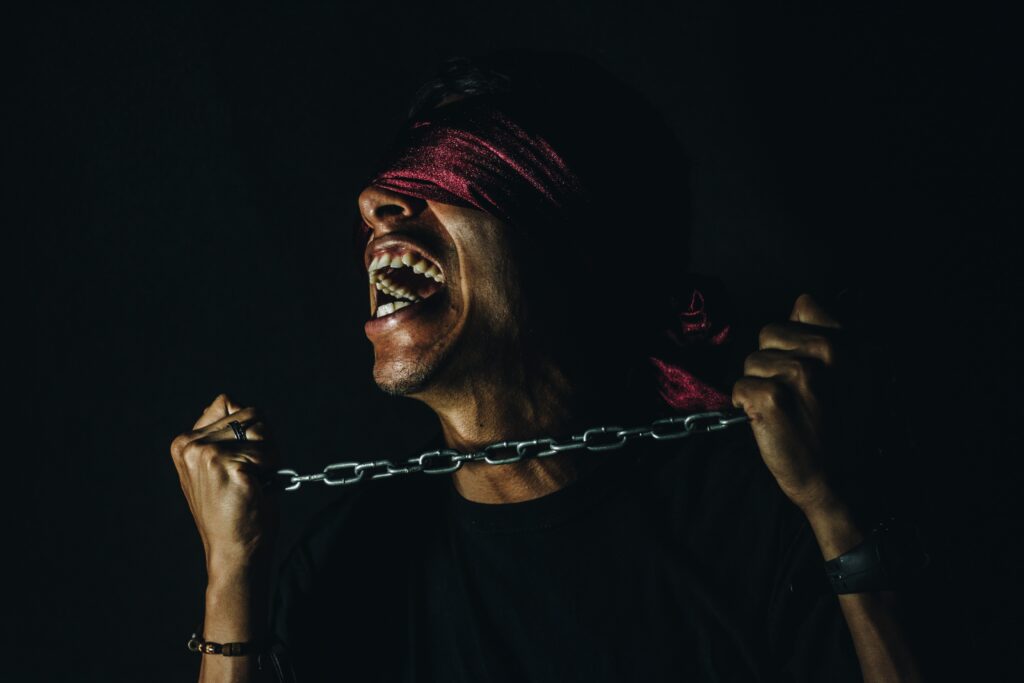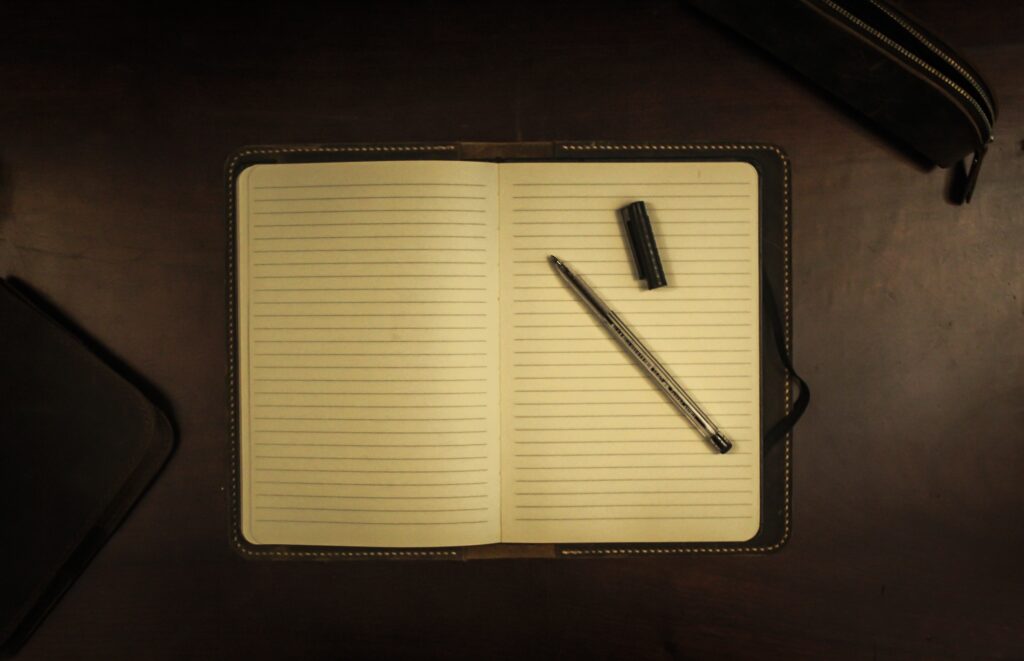
Stiffness is, in all likelihood, the root cause of your chronic pain.
It could be as straightforward as having a stiff lower back from sedentary living.
We could take it one step further, where for example a stiff foot may be causing too much strain to be put on the knees.
We could even go down the psychosomatic rabbit hole and see that for instance, a stiff mind may be causing the ribcage to be locked up, which might make the shoulders ache.
In any case, stiffness is probably the root cause of your chronic pain. And needless to say, chronic pain sucks. You can’t do the things you want to do because you’re too rigid and inflexible. You can’t live the life you want to live because the aches and pains take up so much of your mental bandwidth. You’re always in a state of discomfort.

I don’t want you to feel that way. So I’m typing up a 2-part DIY series on how to unstiffen yourself.
In part 1, you’ll learn how to chill – the prerequisite to getting out of pain. And in part 2, you’ll learn how to improve your body awareness – to further your ability to chill on demand, as well as improve the quality of your movement.
Here’s part 1: Learning how to chill.
Modern life is a schizophrenic smorgasbord of screen-fueled hustle culture and hyperconnectivity. Certainly not conducive to mental health and physical freedom.
To unstiffen yourself, you must learn to chill. Because in exactly the same way that you’ll never out-train a horrible diet, you’ll never out-stretch or out-foam roll the inability to settle your nervous system. As I mentioned before, learning how to chill is prerequisite to getting out of pain.
Learning to chill in a society that doesn’t have any chill can be challenging, so to make things simpler I’ve listed 7 of the most bang-for-your-buck ways to find your chill:
#1 Sleep 8+ hours/night.
To address your chronically elevated stress hormones. To improve your sensorimotor function. To increase your mental bandwidth to tolerate stress without reflexively locking your body up into the startle response.

#2 Socialize.
Because humans (that’s you!) are social creatures, and social pain equals mental and emotional pain, which in turn equals physical stiffness. Being with friends and family is undeniably important; there’s a reason why the leading paradigm in pain science is the biopsychosocial model of pain.
#3 Breathe.
Slow, nasal breathing is key for tipping your physiology towards the chill end of the autonomic nervous system seesaw. Below is one example of a breathing exercise you might use to cultivate a deeper, more relaxed breathing pattern.
#4 Unplug.
Get away from your handheld anxiety-rectangle. Close the slightly bigger, foldable version too. Oh, and keep the wall-mounted one turned off as well. It might feel like you’re relaxing when you’re on your phone, laptop, or TV, but you’d be surprised to see what really goes on with your biology when you’re plugged into the matrix. You could even do a little n=1 experiment if you’d like: The next time you’re on a device, strap on a heart rate monitor and blood pressure cuff and I guarantee that you’d see those values raised above normal for a prolonged period of time. That, my friends, is chronic stress.
#5 Go outside.
The mismatch between the environment (industrialized, deskbound life) and your biology facilitates your being in a state of anxiety, depression, and physical stiffness. Get outside and connect with the natural world. Reacquaint yourself with yourself.

#6 Meditate.
There are many different forms of meditation and for the purposes of this article, I’ll only include the ones that promote a state of relaxation and facilitate greater awareness. YouTube and Spotify have an awesome assortment of the following types of meditation: body scan, autogenic training, mindfulness, yoga nidra. Try ‘em all, and you’ll naturally gravitate towards the style of meditation that allows you to achieve peak chill-ness.
#7 Journal.
Awareness precedes any kind of positive change. It sounds obvious, but if you don’t know what’s stressing you out and locking you up into a state of chronic stiffness, you’ll never address it. And if you never address it, you’ll always be stiff and in pain. Journaling is an invaluable tool for cultivating better awareness. I’ve written extensively about it here, and here.

So there you have it. Before you worry about what the best treatments, modalities, or exercises are for unstiffening yourself, you must first learn how to chill.
Your brain is the control center for your body, so it’s imperative that you feed it the right inputs. Inputs that tell your brain to stop clenching your body into a state of chronic pain. Address the nervous system and your dreams of a loose, limber, and pain-free existence will eventually come to life!
And as always, if you need extra help with finding your chill or if you’re looking for guidance on how to train for sustained health and performance, please don’t hesitate in reaching out!
Pat Koo
BKin, CSCS
Further reading:
- van der Kolk, B. A. (2014). The body keeps the score: Brain, mind, and body in the healing of trauma. Viking.
- Alexander, A. (2019). The align method: 5 movement principles for a stronger body, sharper mind, and stress-proof life. Grand Central Publishing.
- Vranich, B. (2016). Breathe. St. Martin’s Griffin.
- McKeown, P. (2016). The oxygen advantage: Simple, scientifically proven breathing techniques to help you become healthier, slimmer, faster, and fitter. William Morrow Paperbacks.
- Walker, M. (2018). Why we sleep. Penguin Books.
- Mackenzie, B., Galpin, A., White, P. (2017). Unplugged: Evolve from technology to upgrade your fitness, performance, & consciousness. Victory Belt Publishing.
- Gatchel, R. J., Peng, Y. B., Peters, M. L., Fuchs, P. N., & Turk, D. C. (2007). The biopsychosocial approach to chronic pain: scientific advances and future directions. Psychological bulletin, 133(4), 581–624.
- Hansen, M. M., Jones, R., & Tocchini, K. (2017). Shinrin-Yoku (Forest Bathing) and Nature Therapy: A State-of-the-Art Review. International journal of environmental research and public health, 14(8), 851. https://doi.org/10.3390/ijerph14080851
- Mushtaq, R. Shoib, S., Shah, T., & Mushtaq, S. (2014). Relationship between loneliness, psychiatric disorders and physical health: A review on the psychological aspects of loneliness. Journal of Clinical and Diagnostic Research, 8(9), 1-4.
- Petitte, T., Mallow, J., Barnes, E., Petrone, A., Barr, T., & Theeke, L. (2015). A systematic review of loneliness and common chronic physical conditions in adults. The Open Psychology Journal, 8(2), 113-132.
- Smyth, J.M., Johnson, J.A., Auer, B.J., Lehman, E., Talamo, G., & Sciamanna, C.N. (2018). Online positive affect journaling in the improvement of mental distress and well-being in general medical patients with elevated anxiety symptoms: A preliminary randomized controlled trial. JMIR Mental Health, 5(4).
- Russo, M.A., Santarelli, D.M., & O’Rourke, D. (2017). The physiological effects of slow breathing in the healthy human. Breathe, 13(4), 298-309.
- Gerritsen, R.J., & Band, G.P. (2018). Breath of life: The respiratory vagal stimulation model of contemplative activity. Frontiers in Human Neuroscience, 12. doi: 10.3389/fnhum.2018.00397.
- Walker, M. (2017). Why We Sleep: Unlocking the Power of Sleep and Dreams. Scribner.
- Mori, H., Yamamoto, H., Kuwashima, M., Saito, S., Ukai, H., Hirao, K., Yamauchi, M., & Umemura, S. (2005). How does deep breathing affect office blood pressure and pulse rate? Hypertension Research, 28(6), 499-504.

